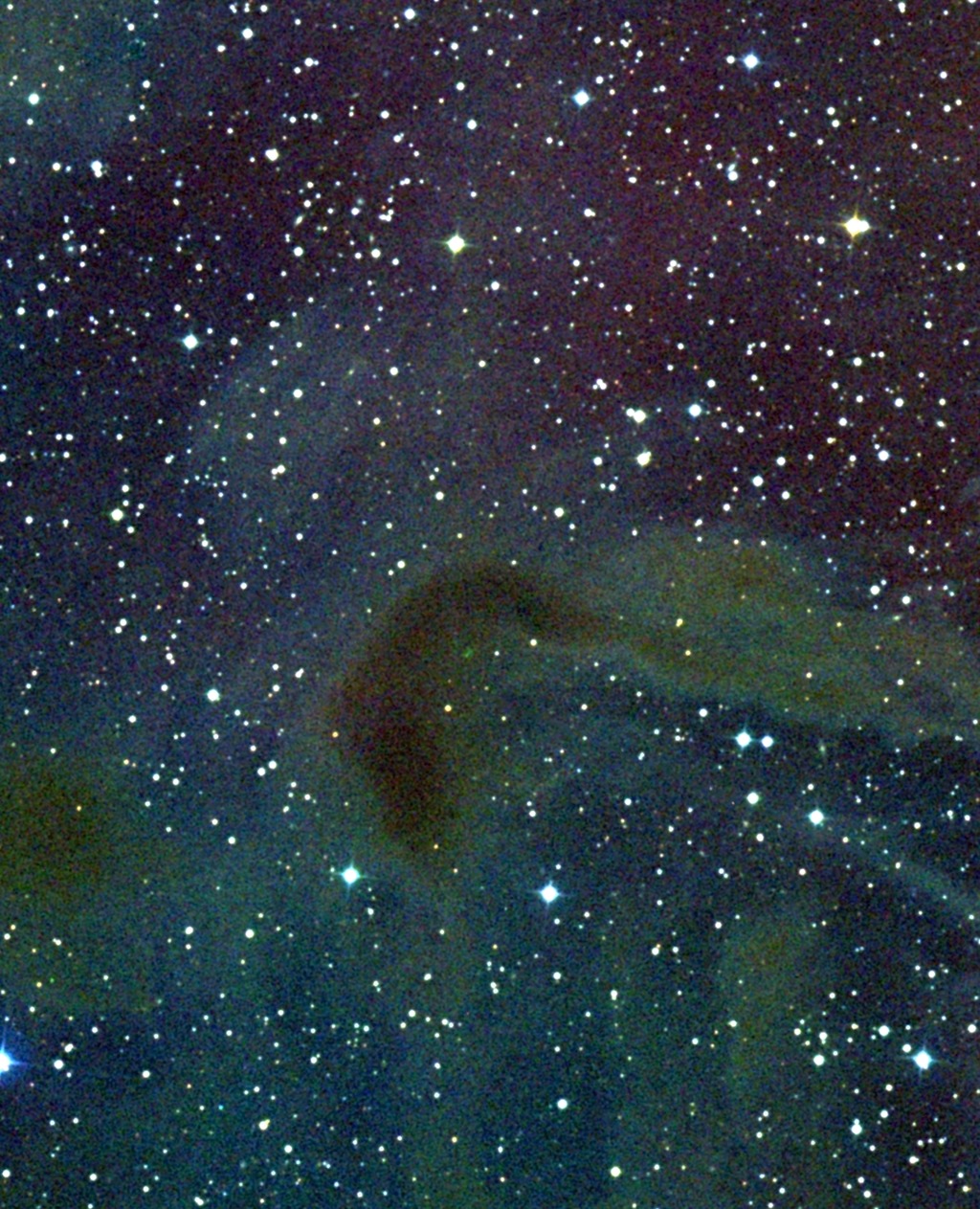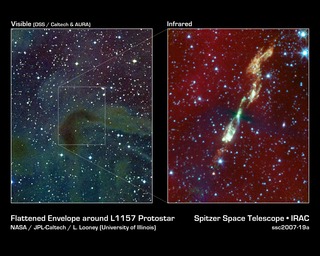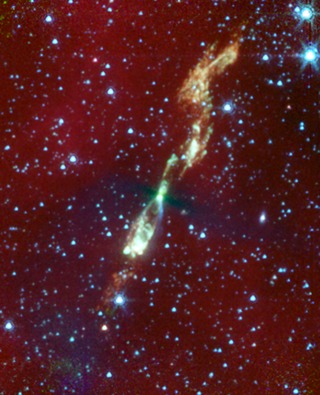
Credit: Caltech/AURA
Observation • November 29th, 2007 • ssc2007-19a2
ssc2007-19a2
A rare, infrared view of a developing star and its flaring jets taken by NASA's Spitzer Space Telescope shows us what our own solar system might have looked like billions of years ago. In visible light, this star and its surrounding regions are completely hidden in darkness.
Stars form out of spinning clouds, or envelopes, of gas and dust. As the envelopes flatten and collapse, jets of gas stream outward and a swirling disk of planet-forming material takes shape around the forming star. Eventually, the envelope and jets disappear, leaving a newborn star with a suite of planets. This process takes millions of years.
L1157 is located 800 light-years away in the constellation Cepheus.
About the Object
- Name
- L1157
- Type
- Star > Evolutionary Stage > Protostar
- Nebula > Type > Jet
- Nebula > Type > Star Formation
- Nebula > Appearance > Dark
- Distance
- 815 Light Years
Color Mapping
| Band | Wavelength | Telescope |
| Optical | 440 nm | DSS |
| Optical | 700 nm | DSS |
| Optical | 900 nm | DSS |
Astrometrics
- Position (J2000)
- RA =20h 39m 6.1s
- Dec = 68° 2' 16.0"
- Field of View
- 17.5 x 21.6 arcminutes
- Orientation
- North is 354.8° left of vertical






